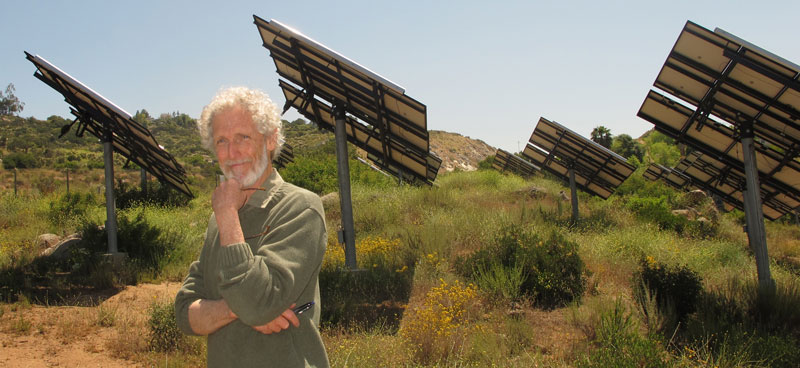Renewable energy systems typically depend on the sun or wind for power. Without the right amount of power being stored or produced during cloudy or still days, you can run into serious problems. Here are some tips on how you can reduce your off-grid electrical demands when the sun just won't shine.
When off grid systems aren’t producing—or storing—enough electricity, you typically have three possible solutions:
- Buy more solar panels and higher capacity batteries
- Buy a generator and/or propane appliances
- Reduce electrical demands
As you know, the most cost-effective option is reducing your electrical load, rather that spending your money on more panels, batteries, and appliances. Here are a few key steps to reduce your power draw year-round.
STEP 1: REDUCE ELECTRICAL DEMANDS
Study Your Power Bills from the Previous Year
Looking through your old bills can answer a lot of questions like:
- What is your monthly power usage?
- How does your power usage change seasonally?
- Which items use the most electricity? (If you're unsure, you can use a Kill-A-Watt energy monitor or a whole home energy monitor to determine individual electrical loads.)
Once you know where your energy budget is being spent, you can see if there are areas you can cut back on your electrical usage.
Switch to Energy-Efficient Appliances
If you notice in your bills that some appliances are taking up too much energy, you can look at replacing them with more energy-efficient solutions. For example:
- Upgrade old, inefficient appliances and infrastructure with Energy Star models
- Connect electronics and appliances to power strips, so you can turn them off when not in use. (This eliminates phantom loads, and can greatly decrease energy usage.)
- Make sure everyone knows when to use high energy appliances such as washing machines, dryers, electric heating, and air conditioning during peak power generation times. (This will reduce drain on the battery bank.)
- Consider running some appliances on propane, if it makes more sense.
Be Wary of Adding Appliances
Another critical step is making sure people in the house don’t add appliances without discussing it with an installer or each other. If you’re working with a client—or working with your family to reduce electrical demands—make sure people know how adding appliances affects the amount of solar panels and battery storage you’ll need. You can help them select energy efficient appliances, and talk about how to use them.
STEP 2: REDUCE RELIANCE ON TRADITIONAL HEATING AND COOLING
According to the Energy Information Administration, nearly half of all household energy consumption is used to heat and cool homes. Fortunately, it’s easy to reduce that load—permanently. Here are some key ways to reduce HVAC energy demands:
- Change thermostat settings as low (winter) or high (summer) as comfortable.
- Use drapes and shades to either trap heat or prevented from entering the house.
- Clean and replace air filters regularly.
- Consider adding blown in insulation to reduce heat losses and ensure a stable indoor temperature..
- If you’re building a house from the ground up, be sure to look at passive solar heating and siting options to drastically reduce your heating and cooling needs.
Consider Air Conditioning Alternatives
Rather than raise use your energy reserves on air conditioning, consider these alternatives to keep your home cool:
- Whole house fans, which pull in cool, nighttime air through open windows and expel hot air out the attic.
- Simple ventilation and cooling systems that pressurize the house to expel hot air at night.
- Compressor-less air conditioning alternatives that can reduce electrical usage by as much as 80 to 90%, without decreasing comfort.
Forgotten Areas to Cut Power Costs
Because when a system is properly sized, everyone can live without micromanaging appliances and home comfort systems – while still avoiding paying utility bills or running out of power. Whatever battery energy storage system you are using, be sure not to exceed 50% depth of discharge for maximum longevity. This provides additional back of her days with low electrical production. It also protects batteries from draining too deeply. A good rule of thumb is to double the true amp hours needed for your system.
Image: Anthony Zarembski











